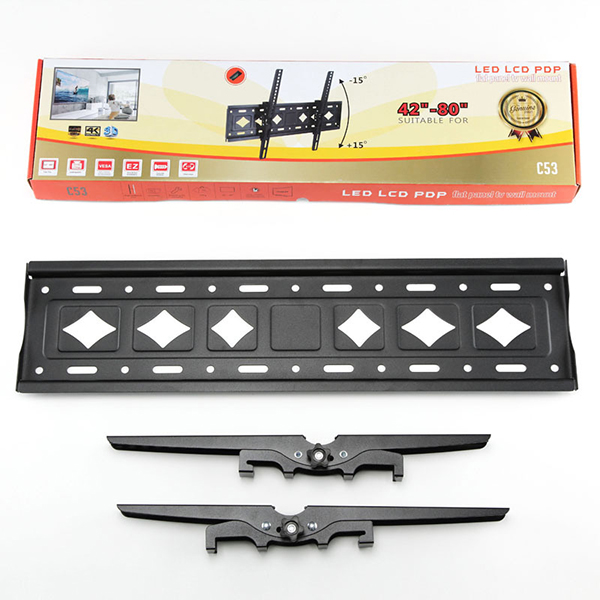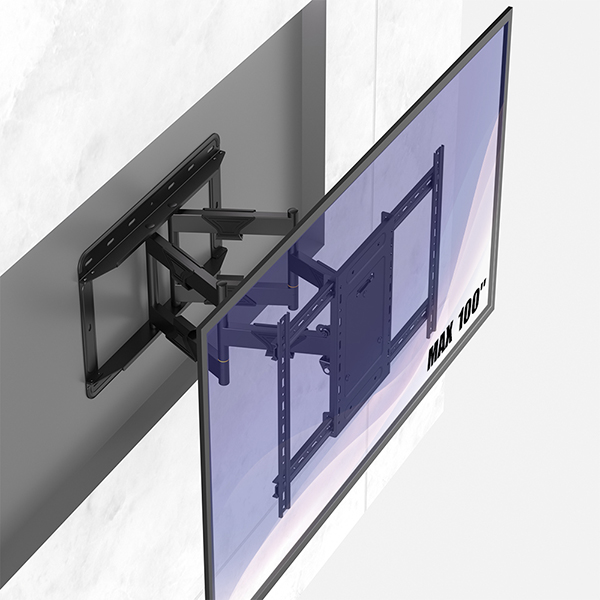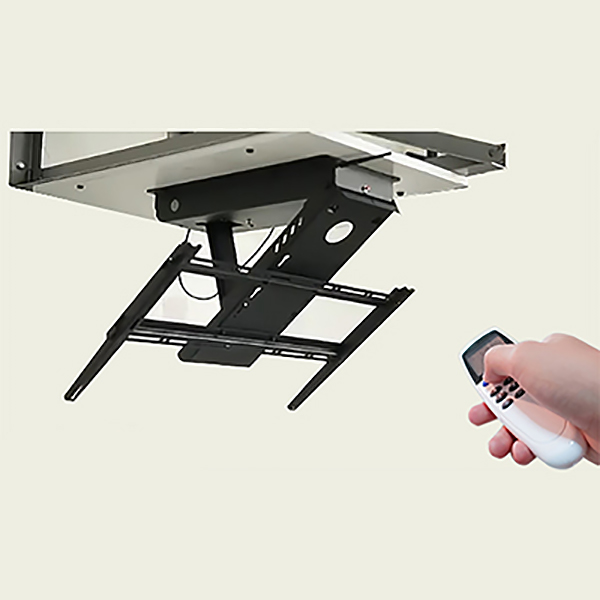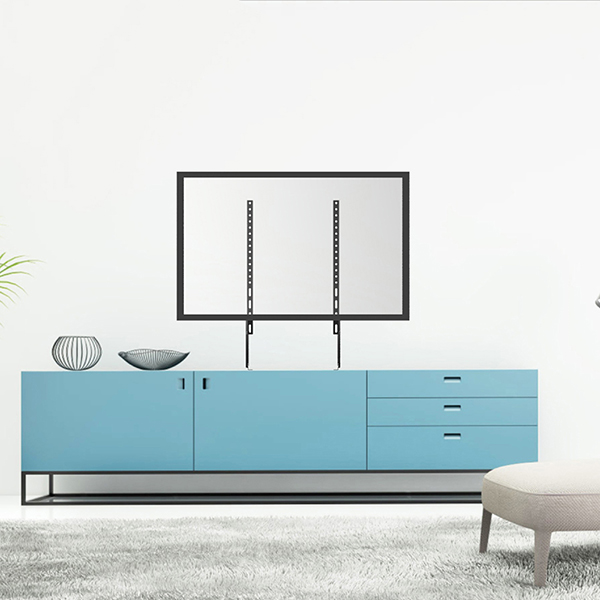Television TV mounts have become increasingly popular in recent years, as more people are looking for ways to maximize their viewing experience without taking up too much space in their homes. With a variety of types to choose from, it can be difficult to determine which one is best for your needs. In this article, we'll explore the most common types of TV Wall Mount and their benefits.
Fixed TV Mounts
Fixed TV wall mounts, also known as low-profile TV mounts, are the simplest type of fixed wall mount tv bracket. These fixed tv bracket attach directly to the wall and hold the TV in a fixed position. They are ideal for rooms where the viewing distance is fixed and the angle of the TV does not need to be adjusted.
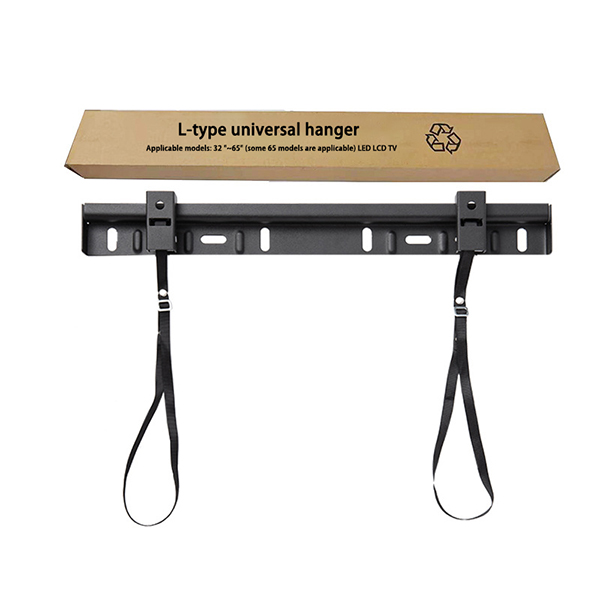
Fixed bracket TV are easy to install and typically cost less than other types of TV mounts. They are also the most secure option, as they hold the TV flush against the wall. This makes them a good choice for households with children or pets, as there is less risk of the TV being knocked over.
One downside of fixed TV wall bracket is that they do not allow for any adjustment of the viewing angle. If you need to change the angle of the TV, you will need to physically move the TV or install a different type of TV mount.
Tilting TV Mounts
Tilting TV wall mounts are similar to fixed TV mounts, but they allow for some adjustment of the viewing angle. These TV mounts attach to the wall and hold the TV at a slight downward angle. This is useful if you need to mount the TV higher on the wall, as it can help reduce glare and improve the viewing angle.
Tilting TV bracket are also a good choice if you need to mount the TV above a fireplace or in a room with high ceilings. They are easy to install and typically cost slightly more than fixed TV mounts.
One downside of tilting TV wall brackets is that they do not offer as much adjustment as other types of TV mounts. If you need to adjust the angle of the TV frequently, a different type of TV mount may be more suitable.
Full-Motion TV Mounts
Full Motion TV Wall Mount, also known as articulating TV mounts, offer the most flexibility of any type of TV mount. These TV mounts attach to the wall and allow the TV to be moved in multiple directions. This includes tilting, swiveling, and extending the TV away from the wall.
TV Mount Full Motion are ideal for rooms where the viewing angle needs to be adjusted frequently. They are also a good choice if you need to mount the TV in a corner or other non-standard location.
One downside of Full Motion TV Bracket is that they are more expensive and more difficult to install than other types of TV mounts. They also require more space on the wall, as they need to be able to extend and swivel.
Ceiling TV Mounts
Ceiling TV Bracket are a less common type of TV mount, but they can be useful in certain situations. These wall mount TV ceiling attach to the ceiling and hold the TV in a fixed position. They are ideal for rooms where wall space is limited or if you want to mount the TV in a non-standard location.
Wall ceiling TV mount are also a good choice if you need to mount the TV in a commercial setting, such as a bar or restaurant. They are less common in residential settings, as they can be more difficult to install and may not be aesthetically pleasing.
One downside of TV wall & ceiling mounts is that they can be difficult to install and may require professional installation. They also require more space above the TV, as they need to be able to extend and swivel.
Desktop TV Mounts
Table Top TV Mount are a type of TV mount that attaches to a desk or other horizontal surface. These mounts are ideal for small spaces, such as dorm rooms or home offices, where a traditional TV mount may not be practical.
Desk top TV stand come in a variety of styles, including fixed, tilting, and full-motion. They are easy to install and typically cost less than other types of mounts.
One downside of universal desktop TV stand is that they are not suitable for larger TVs or rooms where the viewing distance is greater. They are also not as secure as wall-mounted TV mounts, as they rely on the stability of the desk or surface they are attached to.
Conclusion
When it comes to choosing a TV mount, there are a variety of types to choose from. Fixed TV mounts are the simplest and most secure option, while tilting TV mounts offer some adjustment of the viewing angle. Full-motion TV mounts offer the most flexibility, but can be more difficult to install and more expensive. Ceiling TV mounts and desktop TV mounts are less common, but can be useful in certain situations.
Ultimately, the type of TV mount you choose will depend on your needs and the layout of your room. Consider factors such as the size of your TV, the viewing distance, and the location of the TV mount. With the right TV mount, you can enhance your viewing experience and make the most of your space.
When choosing a TV mount, it's important to consider not only the type of TV mount, but also the size and weight of your TV. Most TV mounts are designed to support specific sizes and weights, so be sure to check the specifications before making a purchase.
Another factor to consider is the location of the TV mount. Will you be mounting the TV on a wall, ceiling, or desk? Different types of TV mounts are designed for different locations, so choose one that is suitable for your space.
If you're mounting the TV on a wall, it's important to find the right location and height. The ideal height will depend on the size of your TV and the layout of your room. In general, the center of the TV should be at eye level when you're sitting down.
When it comes to installation, some TV mounts are easier to install than others. Fixed and tilting TV mounts are generally the easiest to install, while full-motion TV mounts can be more challenging. Ceiling and desktop TV mounts may require professional installation, depending on the complexity of the installation.
Finally, it's important to consider the aesthetic appeal of the TV mount. Some mounts are designed to be visible, while others are designed to be hidden. Choose a TV mount that complements the style of your room and doesn't detract from the overall aesthetic.
In summary, when choosing a TV mount, consider the size and weight of your TV, the location of the mount, the installation process, and the aesthetic appeal. With the right TV mount, you can enhance your viewing experience and create a more functional and attractive space.
Post time: May-06-2023

